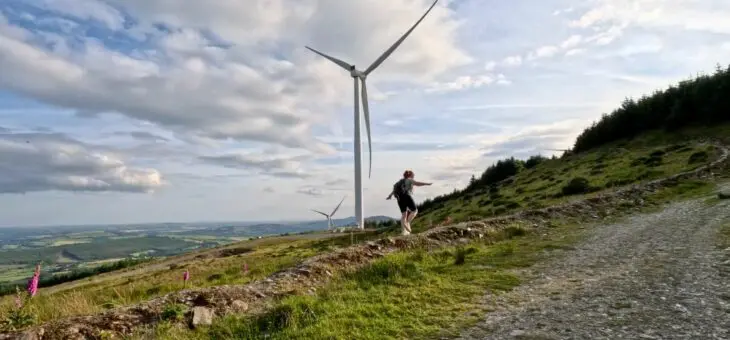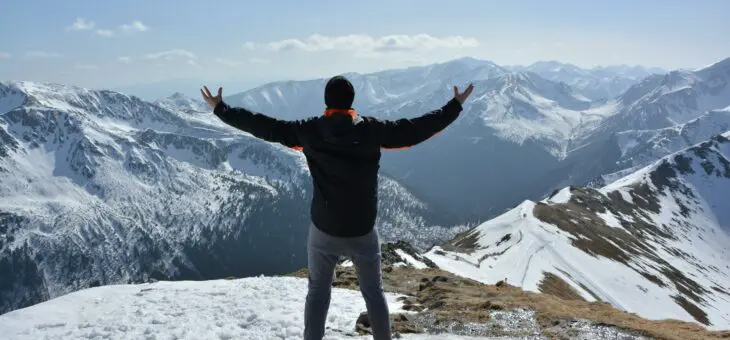This article tackles the matter of layers while hiking. It was written by one of our expedition leaders – Mary Gunning, who has led several expeditions to the summit of Kilimanjaro.
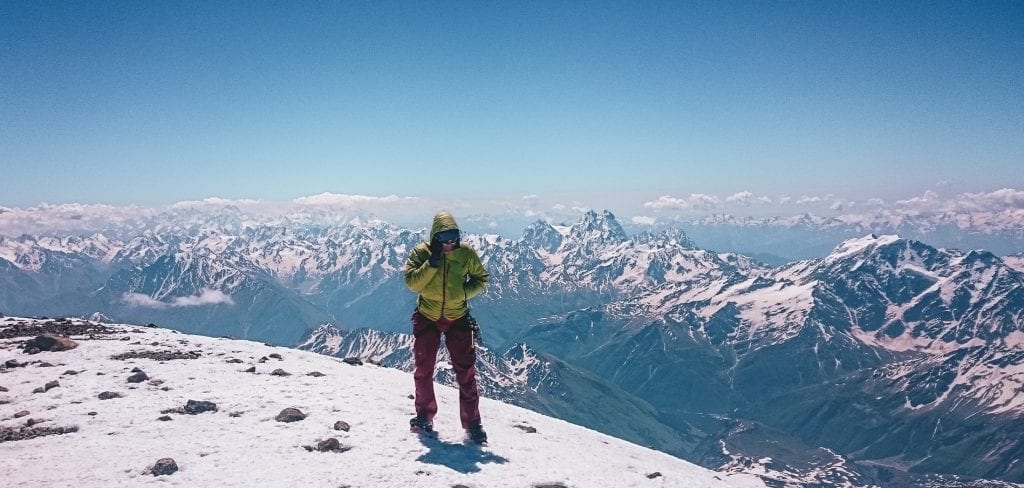
The importance of layers while hiking
Layering is a simple idea based on putting one layer on top of the other to stay warm – right? Sure, that’s simple, that’s obvious, right? Simple it may seem but there are a lot of common misconceptions about layering. The first being the fabrics, the second being on how to do it.
Is cotton a good layer for hiking?
Cotton might be a great fabric for everyday use, however, from a mountain point of view – it’s a definite NO.
Have you ever got caught out in the rain in a pair of jeans? What are the last things to dry on your washing line, or to come out of the dryer still damp! Cotton traps moisture -whether it’s from sweat from your body when you’re active, or from the sky, rain or snow.
When cotton gets wet, it stays wet and it doesn’t dry out easily. It cools your body temperature and causes huge temperature spikes when you are walking. One minute you’re clammy, the next cold and damp. If it’s windy, cotton can chill you to the bone.
This continually gets people into hot water. The best-case scenario is that you are downright uncomfortable, veering towards miserable. All you can think about is getting off the mountain but isn’t this supposed to be a trip of a lifetime?
The worst-case scenario could mean hypothermia, frostbite, or being turned back by your guide because they think you are too cold. This means that the goal of reaching the summit could be dashed because you didn’t read a label!
Top tip: When you are buying your “bargain thermals” please read the ingredients on the label.
A lot of inferior thermals are cheap, that’s because they are made with cotton in the blend – even 30% cotton will have negative effects. Get your thermals right and everything else should follow.

What is the best material for base layers?
There are several options – polyester, polyamide – there are also several synthetic layers available, all beginning with poly. There are differences between the fabrics, but they are all a better option than cotton.
Synthetic thermals and other heavier layers like fleece are a relatively cheap way to layer up. The disadvantage is that they can be bulkier than other options and you need changes, as they get smelly after a few days.
A lot of people are now using Merino wool for their base layer for hiking. Merino wool has the ability to hold its warmth even when it gets wet. This is almost invaluable to combat those inevitable rainy days on the mountain.
Merino wool is a thinner, warmer layer option and it doesn’t smell even after extended wear. You can mix and match synthetic and wool layers too. Running tights and tops can easily be used here, as they are generally synthetic.
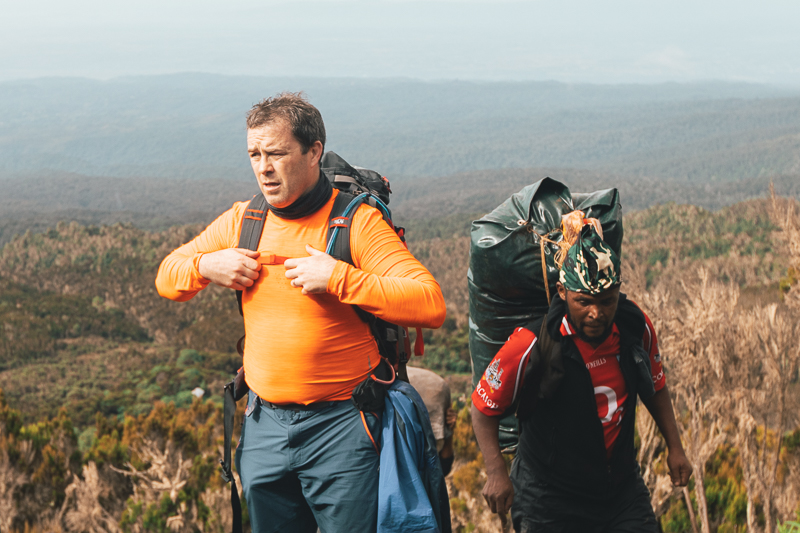
Thick layers vs thin layers
When you think about keeping warm, you might automatically think of getting as many big thick layers as possible. You do need to remember that you’re going to be moving around and generating heat and thin layers are better than thick layers while hiking for several reasons.
Thin layers are more versatile. On treks like Kilimanjaro and Everest Base Camp – it’s not freezing for the entire trek. If you bring a lot of bulky thick layers, you won’t use them for most of the trek. It is also a waste of your money and thick layers can cause you problems with space and weight when packing your bags.
Thick layers while hiking are awkward to wear when you add a few together. You end up not able to see your feet and generally feel about as graceful as a cow on ice.
Wearing a thick layer rather than a few thin layers often makes people overheat but they won’t take off a big layer as they get too cold without a layer. By having thinner layers, you can regulate your body temperature more efficiently- allowing for a happier walker.
Thin layers are the best way to go. They provide maximum versatility through different temperature zones. Lower down on the mountain, it can be quite warm, so buying thinner layers allows you more control in terms of what layers you can wear day to day as you trek. You also get more use out of them after you get home.
It’s important that as you choose the various layers, each layer marries well with the next one. Then you end up with a layering system that can adapt to a range of temperatures.

How many layers do I wear for hiking?
A lot of people think that wearing as many layers while hiking as possible is the best idea. It does make sense that more layers mean more heat, right? The real reason why layering can be so effective is the idea that you are trapping a layer of air between each layer and air is a great insulator.
When you put on your base layer, you might be a medium for example. Then three layers later you might need a large. Add in your rain jacket and by the time you’re putting on your down jacket, you’re going to be large. People get caught out under the arms, across the back, or closing zips up around the neck area. It can feel quite claustrophobic!
The only way of sorting this is by trying all the layers on. Don’t despair if it doesn’t seem to work out at first. Rearranging the layers in a different order, the result can feel completely different. Experiment – lay out your clothes – what is layer 1 (next to your skin), what is a layer 2 and change the orders a bit to see what works best.
It’s not all about getting the most expensive kit. Spend some time seeing if you own any of this kit, especially if you already walk or run. Don’t leave it all to the last minute and end up stressed. Spread out the cost over time. Christmas and birthdays are great opportunities to tell family and friends what you need, saving you money for the bigger ticket items.
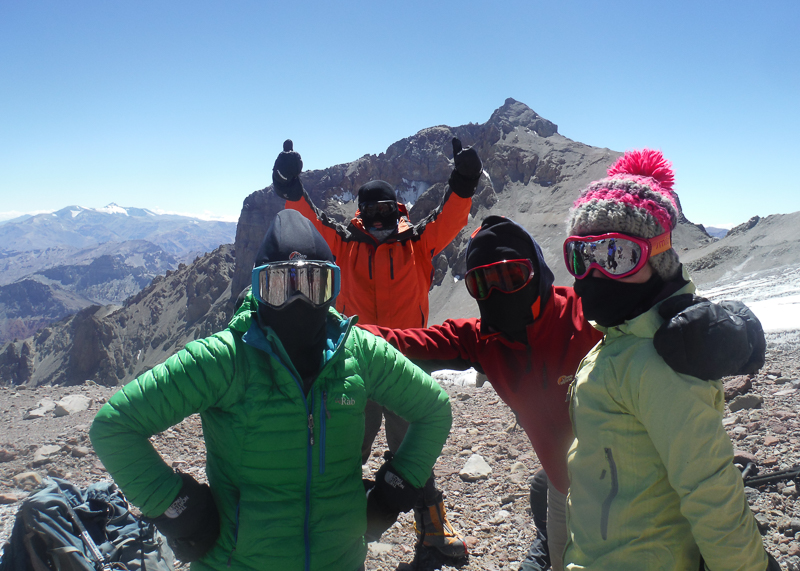
Getting the best hiking equipment
Without the right equipment, it’s a lot of money to spend on the trip of a lifetime to end up cold and miserable and staring at your feet. Meanwhile, the sunrise on summit day on Kilimanjaro eludes you. Or the sunset over the mountains in the Khumbu Valley is missed as it is too much hassle to get out of the tent because you know it’ll be too cold. Even worse would to be turned back if conditions are not at their optimum – all because you don’t have the right jacket or gloves.
We’ve all made mistakes on the mountain – so let’s try and learn something from that so we don’t have to go through unnecessary strife and lose the enjoyment factor. It’s a trip of a lifetime after all! You could stay at home, save yourself the trouble and pop your feet up on the couch where the view of them is free but where’s the adventure in that?
If you have any questions about wearing layers while hiking or would like more intel on any of these items, drop us an email at info@earths-edge.com


